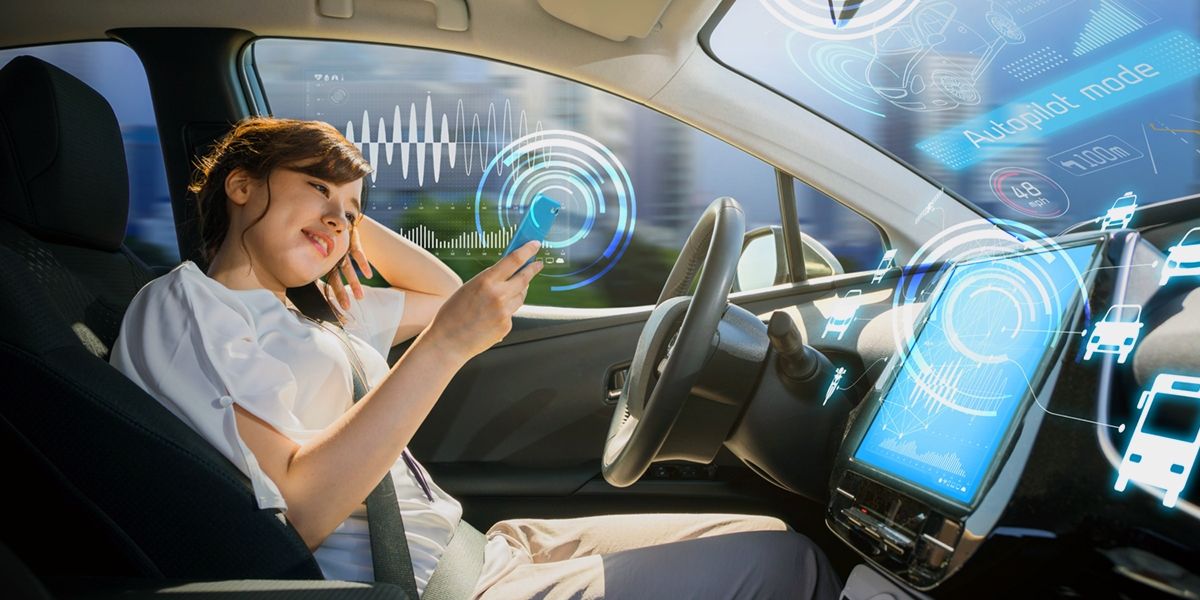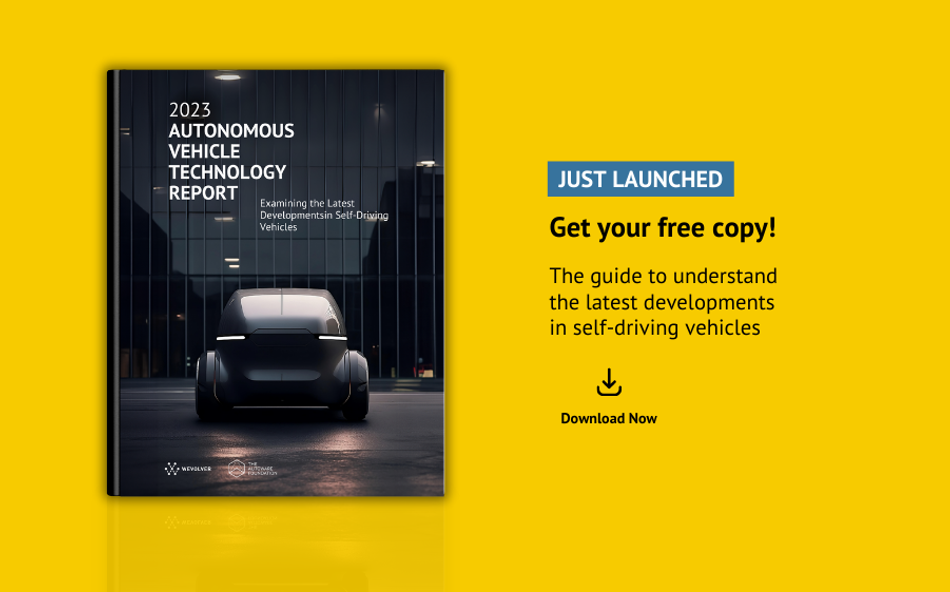2023 Autonomous Vehicle Report Interview: Driving Global Standards

In this interview Christian Thiele, Director, Global Vehicle Standards at SAE discusses advanced mobility, knowledge sharing and automotive solutions for the benefit of humanity.
Ian Dickson spoke to Christian Thiele, Director, Global Vehicle Standards at SAE International about their missionto connect and educate mobility professionals to enable safe, clean, and accessible mobility solutions.
What is SAE?
Christian Thiele: SAE International has been around for about 118 years, our primary focus is dealing with the development of standardization and selling and getting those standards out to the industry. Recognizing that our mission is to advance mobility, knowledge, and solutions for the benefit of humanity, with the vision to connect and educate mobility professionals to enable a safe, clean, and accessible mobility solution at the end of the day, we do this through mutual forums. And by that we enable these mutual forms to develop consensus-based global standards for the global mobility industry.
We are the largest organization that drives mobility standards. But in order to deal with that, we also have a foundation and we also do STEM research, to help develop and grow through learning, through professional development, and pre-professional development, driving people to engage through engineering technology. Basically, fill those coffers for future committee members and future engineers who help these consensus-based standards being developed and produced.
Thanks for the overview. Then when it comes to autonomous cars, you've probably answered this question in part already but how is SAE involved in autonomous cars?
Christian Thiele: Let's look at it this way. Right now, we're not at the autonomous phase. Let's look at automated driving, and recognizing and understanding the automated space. We have specifically through our J3016 identified the levels of automation and clearly, level five and beyond is when you get to a level where you could call it autonomous.
But at the end of the day, what our focus is, is helping drive those standards and develop those standards. To allow interoperability and harmonisation, especially the communication side of how automated vehicles are managed.
Automated driving, ultimately from a vehicle and driver perspective, is to make certain that active safety standards that are built into a vehicle, i.e. the automatic braking, lane change sensing, holding steering wheel position of the car in the lane so it doesn't leave the lane, etc. These are technologies and spaces that we have helped develop in the industry, and helped through our standard organization bodies, building those standards that define what that needs to be.
What are some of the key challenges your members are facing particularly with AV?
The key, especially from a technology point of view, is getting things that are working, to scale and interoperability. This is what we tried to do through our harmonization and through defining those standards for those communication protocols that need to happen, which allow everybody to communicate at one frequency, at one time. It's not English to Chinese; it's everyone speaking English, so to speak, to put it in layman's terms.
Okay, perfect. And then talking about the organization in a more general capacity. What are some of the benefits to your members of being in SAE and the adherence to these standards?
Let's look at what standardization does for a company and organization itself. First, you reduce costs and design development, because you are convening a large group of industry experts that come together to help better define, narrow, and develop what standards we need to follow and to make design and development easier on the individual corporations and companies. This makes engineering easier and it reduces the cost. It also increases performance as it permits a common interface. Increased productivity and processes enable companies to become more effective and efficient at what they do as a corporation.
So ultimately, what does this do at the end of the day? It helps to enhance safety, create a common language out there for everybody to communicate to, and facilitates throughput through regulations. It harmonizes the global marketplace. Standards ultimately give compatibility, consistent quality product, regulatory compliance, clear expectations, and consistent product performance. Everybody understands what needs to be when, where and how. It also allows for efficient procurement, which is vitally critical for organizations and companies to be able to buy and procure products.
These reasons show why the SAE and the standards bodies organizations are vitally critical.
Then how do you actually create global standards when regulations requirements vary so much by country?
Yeah, so, what we do is we work on a regional, national, and international space. Standards by themselves are not the finding. The right standards give you a direction of what is perhaps seen as the best technical information out there.
We support harmonization through the UN. For example, we sit as a consultant on a consultative body. Where we contribute expertise on dealing with communication protocol and connected vehicle protocols. We helped derive some of those standards that ultimately will be implemented at a local government level.
How different are the SAE standards for autonomous vehicles versus the current generation of vehicles?
Let's understand two things. First, before, the car was a self-contained environment. At the end of the day, it never communicated with the outside environment. The person or thing that was communicating was you, the individual driving the vehicle who was seeing and hearing etc. And you would make that vehicle go where it needed to go. Now you have systems that are going to define where, when, and how to best engage that vehicle under certain circumstances. And that's where the challenge is. How much confidence do we have from a security point of view to ensure that the systems are secure, without being hacked or compromised, through other means? Now, even EV vehicles recognize they're plugging in and charging. Anytime you plug in the vehicle, something happens as it relates to communication between the vehicle and the outside world. And there are threats and risks there.
So in your opinion, where do you think we are with autonomous vehicles? And what's your vision of an autonomous future?
I definitely see an opportunity. I don't think we're there yet with a fully automated vehicle. I think level one or two are pretty sound and robust. Level three and beyond that, that's where it becomes challenging and I think in the next five to 10 years, you will see major technology advancements allowing for reliability and capability to execute to a certain level that is acceptable. You don't want a braking system working 60% of the time, you'd like it to be in the 99 percentile, recognizing and understanding that these things will help and benefit the occupants in the vehicles and the drivers themselves.
We had over 43,000 deaths last year in the US related to automotive mobility related deaths. That is a frighteningly large number and we need to do whatever we can do from a technology point of view, to advance these vehicles to better utilize technology to better enable automated driving down the road.
Thank you. How do you think AVs can contribute to society? I think you've really touched on it there in terms of reducing the number of deaths and serious injuries.
We need to acknowledge the ongoing revisions to the J3016, which is the standard for defining levels of automation in vehicles. It's crucial to consider human factors in this context. From the perspective of distracted driving, it's important to recognize the potential benefits of automated and autonomous vehicles. These technologies can significantly aid in addressing distracted driving issues.
Currently, we are exploring technologies that are already available. For instance, in Europe, every new vehicle will be equipped with Driver Management Systems (DMS). These systems, which include vision systems and driver monitoring capabilities, focus on tracking the driver's head and eye positions. This is a key step in enhancing safety through DMS.
It's essential to always be aware of the driver's actions, particularly the position of their hands. Implementing these technologies immediately can help drivers stay focused on driving rather than being distracted by other activities.

